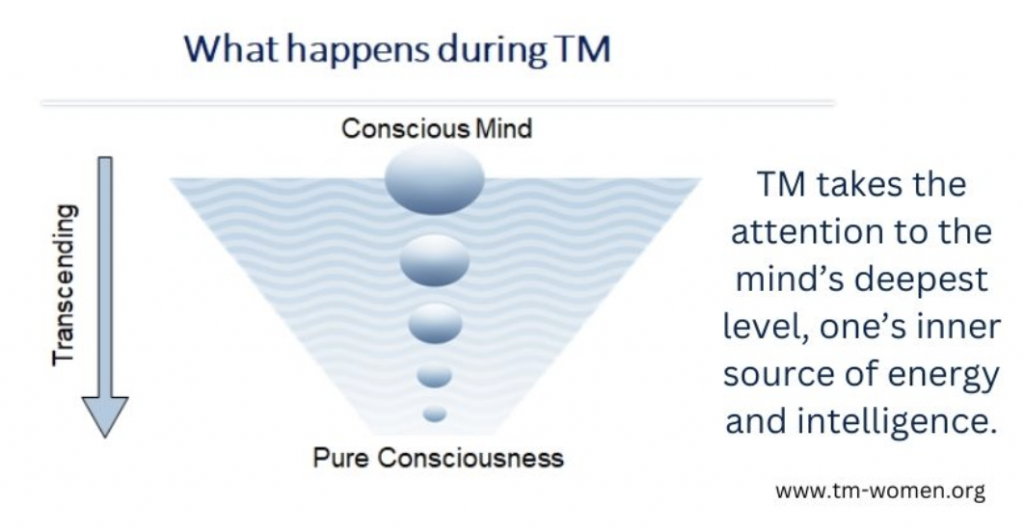The TM technique is Different
A common question asked by people interested in learning to meditate is “What’s the difference between Transcendental Meditation and other techniques?”
Techniques in the name of meditation generally involve either concentration, contemplation (including visualization) or monitoring.
- Mindfulness techniques can involve watching your thoughts or monitoring other mental or physical activity, or focusing on your breathing or body, keeping the attention on the surface level of activity.
- Techniques employing concentration, or trying to empty the mind, can be difficult and actually increase trait anxiety.
- There’s also guided meditation, which keeps the attention outward.
- Meditating for insight is internal listening in a non-judgemental fashion, searching for resolution and keeps the mind directed.

Learn More
What the Research Shows
The findings of more than 435 independent peer-reviewed studies suggest an exceptional range of benefits not seen in studies on other meditation techniques.
The TM technique is the only meditation technique that shows:
- A sustained reduction in heart disease:
- Clinically significant reduction in systolic and diastolic blood pressure
- Reduction in left ventricle mass
- Reduction in atherosclerosis
- A minimum of 48% reduction in cardiac events like heart attacks and strokes.
- Significant reductions in healthcare utilization and costs.
- Increases in broadband intra and unique inter-hemispheric EEG coherence associated with increased neurological functioning, IQ, academic performance, grade point average, creativity, concept learning, serenity, emotional stability, self-esteem, moral reasoning, and consciousness orientation.
The TM technique is the most effective meditation for:
- Reducing drug, alcohol and cigarette use
- Increasing self-actualization (three times more than any other meditation or relaxation technique)
- Significantly reducing depression and stress
- Reducing anxiety (twice as much as any other form of meditation)


How TM is different
Different meditation techniques engage the mind and physiology in different ways, invariably producing different effects on the mind, body and behavior.
TM is unique in that the technique allows you to spontaneously go deep within to experience a revitalizing state of restful alertness–pure consciousness–rather than remaining on the conscious surface level of thought. This process happens naturally and effortlessly during TM–a highly unusual experience in the field of meditation–often surprising the beginner by how simple and easy it is.
